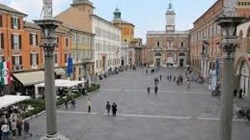Italy
Vision underpinning the plan
The quality of life in the urban area is strictly connected to sustainable mobility management.
The goal is to allow citizens to easily and fully move in the city but, at the same time, to limit the negative effects produced by traffic, such as air and noise pollution.
The SUMP is oriented to enhance the mobility of residents and city users so that they can give priority to walking, cycling or using the public transport. This not only helps to improve the environmental conditions and quality of the urban areas, but it also allows the citizens and tourists to enjoy public spaces otherwise occupied by parked vehicles, effectively increasing the city liveability.


Long-term strategic objectives
- Promote bike use
- Secure and extend bike lanes
- Increase and promote use of public transport
- Change park pricing in order to discourage access to the city centre by car
- Build safer road infrastructures
- Increase intelligent technologies connected to mobility
- Reinforce education and training for all road users
- Enhance monitoring
- Set and reach an objective concerning road victims and injuries.
Mid-term goals
Reduction of emissions are foreseen as follows:
47% PM10 by 2020
36% NOx by 2020
27% NH3 by 2020
27% VOC by 2020
7% SO2 by 2020
25% reduction of road victims.
Specific indicators
Context analysis
Procedures for collecting data: data research through public databases
Sources: Ravenna Statistics Office, ACI, ISTAT, ISFORT
Before the process of drafting the Plan, a working group has been created and a Negociation roundtable has been set in order to define the participation procedures. Key stakeholders in city social life have been invited to take part
The measures and actions undertaken by the SUMP are willing to support a balanced development of intermodal transport defined within the participatory process and according to the inputs arising from the environmental assessment to be carried out underway
Procedures for monitoring and evaluation are defined and implemented. One is the Strategic Environmental Assessment; during the implementation of the measures, a set of performance indicators will be provided
Participation in a regional call for financing activities related to mobility issues.
Know more
The new Ravenna’s SUMP tries to switch from the tradicional mobility plans, more focused on car mobility, to a new concept of modal, sustainable and accessible mobility for all.
Also, it seeks to more easily connect the city with its 64 surrounding smaller towns.